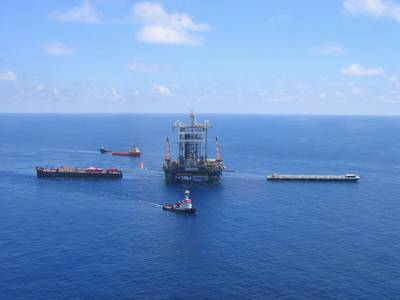Studies Show U.S. Offshore’s Untapped Potential
While short-term news emanating from the global energy sector was universally negative in the waning months of 2014 as the price per barrel continued to plummet below $60, the inevitable truth of oil & gas is that prices will rise again, and the long-term picture for this extinguishable natural resource is decidedly bullish. The oil and gas industry is very well accustomed to hard cyclical markets, markets that are defined not only by supply and demand but increasingly by hard-to-predict forces of politics and international gamesmanship.
Despite the gloom, two new studies released by the National Ocean Industries Association (NOIA) and the American Petroleum Institute (API) show significant potential added energy and economic benefits to the U.S. if the Eastern Gulf of Mexico and the Pacific outer continental shelf (OCS) were opened to offshore oil and natural gas development. Both studies were conducted by Quest Offshore Inc.
All three areas – the Eastern Gulf of Mexico, the Pacific OCS and the Atlantic OCS – are currently almost entirely off-limits to offshore oil and gas development but could be included in the federal government’s next five-year leasing program. If the federal government begins holding lease sales in these regions in 2018, the three studies show that by 2035:
• Pacific OCS development could create more than 330,000 jobs, spur nearly $140 billion in private sector spending, generate $81 billion in revenue to the government, contribute over $28 billion per year to the U.S. economy, and add more than 1.2 million barrels of oil equivalent per day in domestic energy production.
• Eastern Gulf of Mexico development could create nearly 230,000 jobs, spur $114.5 billion in private sector spending, generate $69.7 billion in revenue for the government, contribute over $18 billion per year to the U.S. economy, and add nearly 1 million barrels of oil equivalent per day to domestic energy production.
• Atlantic OCS development could create nearly 280,000 jobs, spur $195 billion in private sector spending, generate $51 billion in revenue for the government, contribute up to $24 billion per year to the U.S. economy, and add 1.3 million barrels of oil equivalent per day to domestic energy production.
• Development in all three study areas – the Eastern Gulf of Mexico, the Pacific OCS, and the Atlantic OCS – could, by 2035, create more than 838,000 jobs annually, spur nearly $449 billion in new private sector spending, generate more than $200 billion in new revenue for the government, contribute more than $70 billion per year to the U.S. economy, and add more than 3.5 million barrels of oil equivalent per day to domestic ener
(As published in the March 2015 edition of Maritime Reporter & Engineering News - http://magazines.marinelink.com/Magazines/MaritimeReporter)












